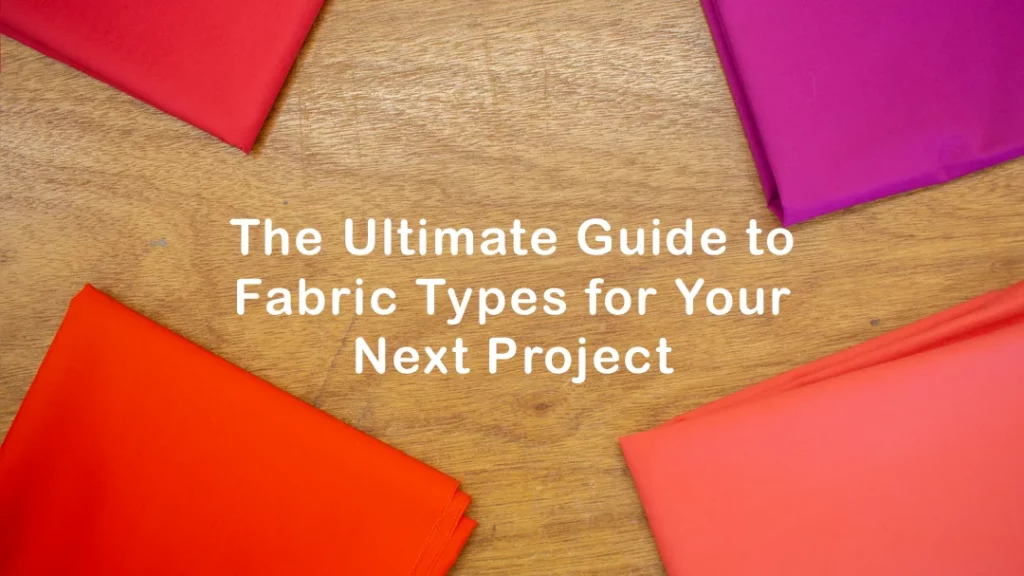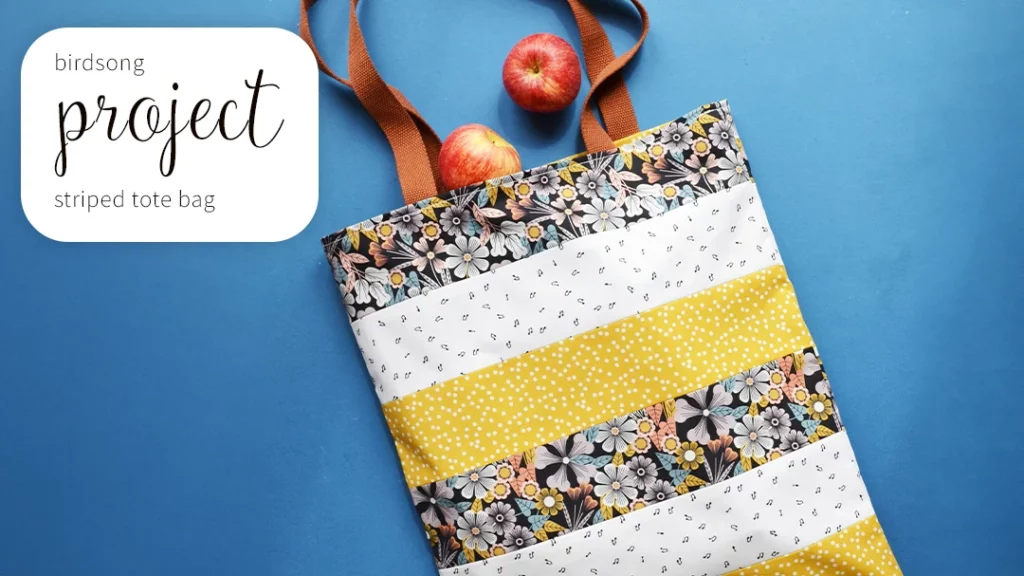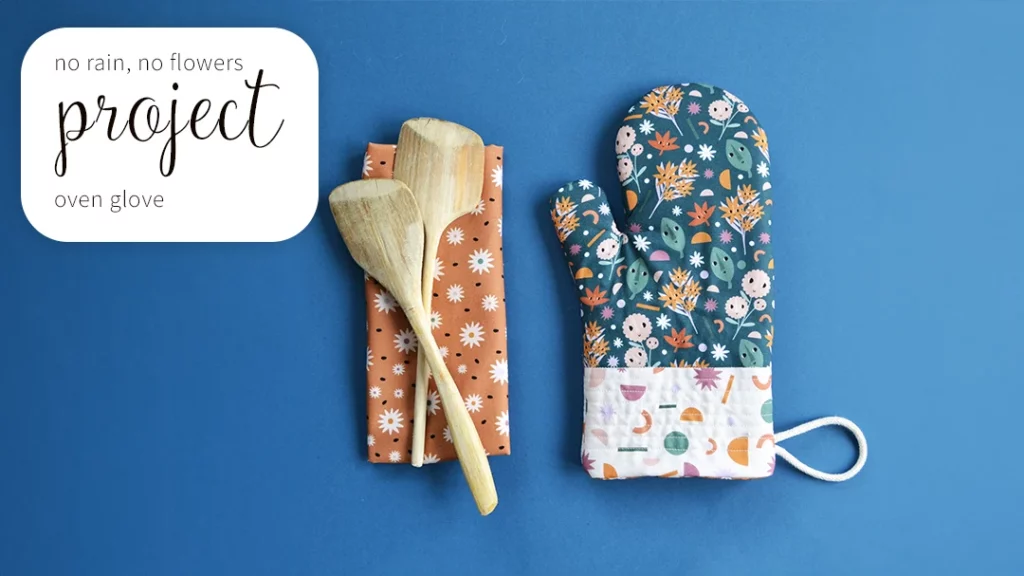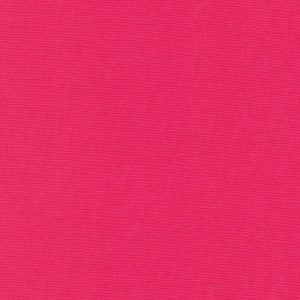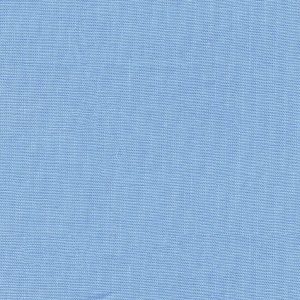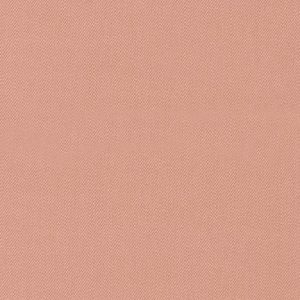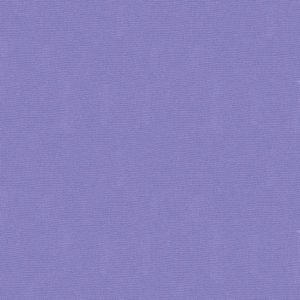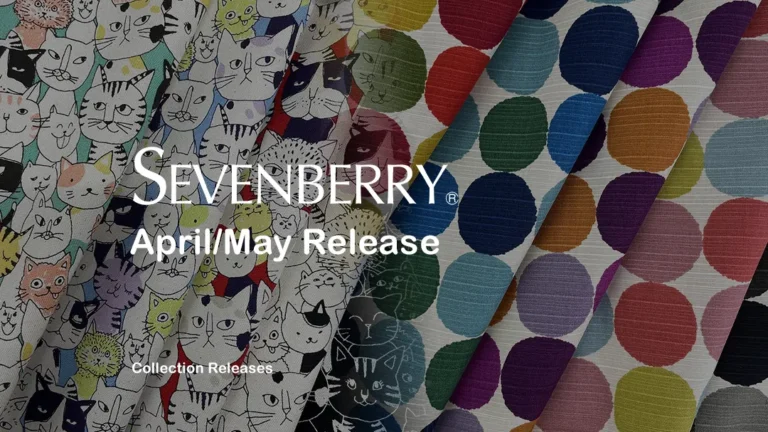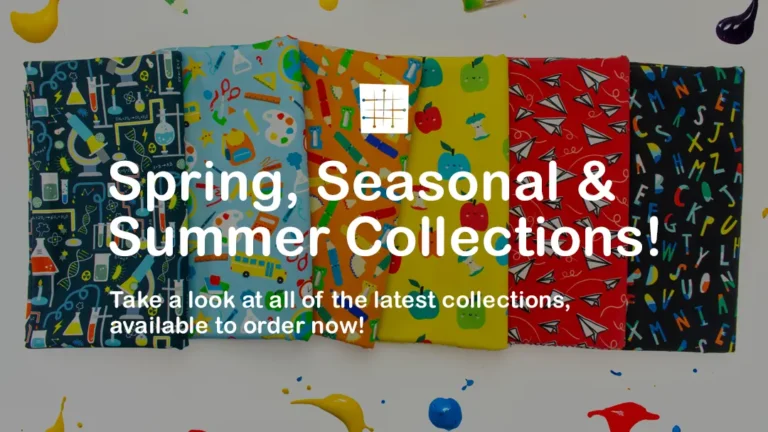If you’re a seamstress, tailor, or fashion designer, you know that the fabric you choose can make or break your project. From Cotton to Rayon, Jersey to Corduroy, there are countless options available, and selecting the right one can be a daunting task. That’s why we’ve put together this ultimate guide for fabric types. Whether you’re just beginning or already an esteemed sewist, this guide will give you a comprehensive overview of the different types of fabric and their pros and cons, so you can choose the perfect material for your next project.
In this guide, we’ll break down everything you need to know about fabric types, including the different types of fabrics available, the pros and cons of each, and which projects they are best suited for.
Knowing when to use the correct fabric type is a crucial element of any sewing project. The right fabric can bring your design to life, while the wrong one can leave your creation looking drab or ill-fitting. This guide will take you through the most popular fabric types, discussing their pros and cons, and giving you a comprehensive overview to help you choose the best one for your project.
Let’s Get Sewing!
Table of Contents
Cotton
Cotton is a natural fabric that is widely used in clothing, home décor, and quilting. It is a soft, breathable fabric that is versatile and easy to work with.
Characteristics
- Soft and breathable
- Absorbent
- Can be lightweight or heavy
- Comfortable to wear
- Holds colour well
Pros
- Versatile and easy to work with
- Can be used for a wide range of projects
- Durable and long-lasting
- Hypoallergenic and gentle on the skin
Cons
- Can shrink or stretch when washed
- Can wrinkle easily
- May not be as durable as some synthetic fabrics
Exploring the Versatility of Cotton
Cotton is a versatile fabric that opens up a world of possibilities for sewing, crafting, apparel making, and quilting! Let’s take a look at some of the top cotton types that are beloved for their quality, comfort, and suitability for various projects:
Cotton: The go-to choice for a wide range of projects, 100% cotton is a reliable and versatile fabric. Highly favoured for quilting due to its excellent breathability, easy handling, and wide availability in a variety of prints and colours. Whether you’re a beginner or an experienced quilter, cotton is the ideal fabric choice to bring your quilting projects to life.
Cotton Lawn: Picture a fabric that feels like a gentle breeze against your skin—soft, lightweight, and delightfully smooth. That’s cotton lawn! It’s a dream fabric for creating elegant dresses, blouses, and other lightweight clothing. With its delicate drape and smooth surface, cotton lawn adds a touch of sophistication to any outfit.
Cotton Poplin: Seeking a cotton fabric that’s both sturdy and versatile? Look no further than cotton poplin, also known as cotton broadcloth. This medium-weight fabric features a plain weave and offers exceptional durability. It’s perfect for creating tailored shirts, skirts, pants, and even home décor items like cushion covers or curtains.
Cotton Voile: Imagine a fabric that effortlessly captures the essence of lightness and airiness. That’s cotton voile for you! This lightweight, semi-sheer fabric is a popular choice for creating ethereal dresses, skirts, and blouses. Its soft drape and delicate texture make it a go-to option for flowing, romantic clothing.
Cotton Chambray: Looking to infuse your wardrobe with a hint of casual charm? Cotton chambray is the way to go. It’s a lightweight fabric with a plain weave and a slightly mottled appearance, resembling denim but with a softer touch. Perfect for creating relaxed shirts, dresses, and lightweight bottoms, cotton chambray adds a laid-back vibe to your everyday outfits.
Cotton Linen: When it comes to apparel and formal wear, cotton linen takes the spotlight. This blend of cotton and linen combines the best of both worlds. It offers the breathability and softness of cotton with the crisp texture and elegant drape of linen. Cotton linen fabrics are commonly used for creating chic blouses, trousers, dresses, and suits, making them ideal for special occasions and formal events.
Best Uses
Cotton is a popular choice for clothing, such as t-shirts, dresses, and skirts, as well as for home décor projects like curtains and bedding. It is also the most popular choice for quilting, as it is easy to work with and comes in a wide range of colours and prints.
When it comes to quilting, cotton batting is a common choice for its soft, lightweight feel. It can be used for both hand-quilting and machine quilting and is often preferred for its natural feel and texture. Cotton fabric can also be used in quilt tops and backing, providing a comfortable and breathable layer for the quilt.
Care
Cotton can be machine-washed and dried, but it is important to follow care instructions to prevent shrinking or stretching. Avoid high heat when drying, and consider removing the fabric from the dryer while still slightly damp to prevent wrinkles. Cotton can also be ironed on a high heat setting if needed.
Cotton Lawn
Cotton Lawn is a lightweight, breathable fabric that is perfect for warm weather clothing. It is known for its delicate appearance, but it is actually quite durable and easy to care for.
Characteristics
- Lightweight and breathable
- Smooth texture with a slight sheen
- Delicate appearance, but durable in structure
- Available in a wide range of colours and patterns
Pros
- Lightweight and breathable, making it ideal for warm weather clothing
- Easy to care for and can be machine-washed
- Available in a wide range of colours and patterns
- Versatile and can be used for a variety of projects, including dresses and shirts
Cons
- May wrinkle easily
- Can be prone to shrinking in high heat
Best Uses
Cotton lawn is perfect for warm weather clothing, such as dresses, skirts, blouses, and lightweight pants. It can also be used for homey projects such as curtains, tablecloths, and pillowcases. Due to its delicate appearance, it is a popular choice for heirloom sewing projects and vintage-inspired clothing.
Care
Cotton lawn can be machine-washed on a gentle cycle and dried on low heat. It should be ironed on a low heat setting to avoid damage to the delicate fibres. To prevent shrinking, it is important to avoid high heat and to air dry the fabric whenever possible.
Jersey
Jersey is a stretchy, knit fabric that is popular in clothing and other textiles. It is commonly used in t-shirts and athletic wear due to its comfort and ease of movement.
Characteristics
- Stretchy and comfortable
- Soft and breathable
- Drapes well
- Can be made from a variety of fibres, including Cotton, Polyester, and Rayon
Pros
- Comfortable and easy to wear
- Stretchy and can fit a variety of body types
- Drapes well and is often used for fitted clothes
- Available in a variety of colours and prints
Cons
- Can be prone to pilling and snagging
- May stretch out over time
- May not be as durable as other fabrics
Versatile and Trendy: Unlocking the Potential of Jersey Fabric
Jersey is a versatile and comfortable material that opens up a world of possibilities for creating stylish and comfortable clothing. With Jersey, you can unleash your creativity and make a wide range of fashion pieces that are both fashionable and cozy.
T-shirts can be easily made with Jersey fabric. From basic crew neck tees to trendy oversized styles, Jersey provides the perfect combination of comfort and stretch for creating stylish tops.
For those warmer days, Jersey is ideal for making shorts and leggings. The stretch and breathability of the fabric ensure a comfortable fit, allowing for freedom of movement. You can create athletic-inspired shorts for workouts or casual loungewear, as well as leggings for a versatile and comfortable addition to your wardrobe.
Let your creativity run wild with jersey fabric, and explore the endless possibilities it offers. From fashionable clothing to trendy accessories, jersey fabric will keep you comfortable and stylish in every season.
Best Uses
Jersey is a popular choice for t-shirts, dresses, and other comfortable, casual clothes. It is also commonly used in athletic wear due to its stretch and moisture-wicking properties.
In quilting, Jersey is not a common choice, as it can be difficult to work with and may not hold up as well over time. However, it can be used for small quilting projects like baby blankets or decorative wall hangings.
Care
Jersey can be machine-washed and dried on a low heat setting. Avoid using high heat or harsh detergents, which can cause the fabric to pill or lose its stretch. It can be ironed on a low heat setting, but it is important to test a small area first to avoid damaging the fabric.
Rayon
Rayon is a versatile, synthetic fabric that is popular for dress making. It is a soft, lightweight fabric that drapes well and is often used as a silk substitute.
Characteristics
- Soft and lightweight
- Breathable
- Drapes well
- Can be used to imitate other fabrics like Silk, Linen, and Cotton
Pros
- Versatile and can be used in a variety of projects
- Affordable
- Drapes well and is often used for flowing clothes
- Can imitate more expensive fabrics
Cons
- Can shrink when washed
- May wrinkle easily
- Can be difficult to care for
- Not as durable as some natural fabrics
Is Rayon The Perfect Fabric for Dress Making?
Rayon is a versatile fabric that has gained popularity in the world of fashion and dressmaking. Made from natural cellulose fibres, offering a luxurious drape and a soft, smooth texture that often imitates a silk like feeling. Its unique characteristics make it a go-to fabric for creating beautiful dresses for the Summer!
One of the standout features of Rayon is its excellent drape, flowing and moving gracefully, creating a flattering silhouette for dresses and other light clothing. If you’re looking to sew a flowing maxi dress, an elegant evening gown, or a chic blouse, Rayon is a perfect choice!
Another advantage of Rayon is its versatility in terms of prints and colours. With the ability to hold dye exceptionally well, resulting in vibrant and rich colours that can enhance any design. From bold and vibrant prints to subtle florals and abstract patterns, offering an extensive range of options for creating eye-catching and unique clothing.
Rayon is also prized for its comfort. Its smooth and soft texture feels luxurious against the skin, making it a pleasure to wear. It has a lightweight feel that allows for easy movement, providing both style and comfort in dressmaking.
When working with Rayon, it’s important to handle the fabric with care. Due to its delicate nature, it’s recommended to use a sharp needle and a fine thread when sewing. Pre-washing and ironing the fabric before cutting and sewing can also help minimize shrinkage.
Best Uses
Rayon is a popular choice for clothing, especially flowing clothing like dresses, skirts, and blouses.
Care
Rayon can be machine-washed, but it is important to follow care instructions closely. It may shrink when washed, so consider hand-washing or using the delicate cycle. Avoid high heat when drying, and consider air-drying or using a low heat setting. You can also iron on a low heat setting.
Polyester
Polyester is a popular synthetic fabric that is commonly used for clothing, plushies & soft toys, and accessories. It is a versatile fabric that is lightweight, durable, and often less expensive than natural fabrics like cotton and silk.
Characteristics
- Lightweight and durable
- Resistant to wrinkling
- Quick-drying
- Stain-resistant
- Holds colour well
Pros
- Resistant to shrinking and stretching
- Versatile and easy to work with
- Can mimic the look and feel of natural fabrics
- Often less expensive than natural fabrics
Cons
- Can be prone to pilling
- May not breathe as well as natural fabrics
- Can melt or burn easily under high heat
Exploring the Versatility and Comfort of Polyester
Polyester fabrics are incredibly versatile, offering a wide range of options to suit different needs and preferences. One of the remarkable qualities of polyester is its ability to be transformed into fabrics with varying textures and functionalities.
When it comes to creating a luxurious and soft feel, polyester can be crafted into plush fabrics or faux fur. These fabrics are renowned for their incredibly soft texture, making them perfect for cozy blankets, plush toys, and snuggly cushions.
On the other hand, polyester can also be treated to provide functional features similar to nylon, such as waterproofing. By applying special coatings or laminations, polyester fabrics can become highly resistant to water and moisture. This makes them an excellent choice for outdoor gear, sportswear, and items that require protection from the elements. Whether you’re crafting rain jackets, backpacks, or camping equipment, polyester fabrics with waterproofing capabilities offer reliable performance and durability.
Whether you’re looking for a super soft fabric or a functional waterproof option, polyester has you covered. Its versatility allows it to be transformed into fabrics that cater to different needs and preferences. From the cozy comfort of plush fabrics and faux fur to the practicality of waterproof polyester, this fabric offers endless possibilities for creating stylish, functional, and comfortable items.
Best Uses
Polyester is a good choice for projects that require durability and easy care, such as athletic wear, swimwear, and outdoor gear. It is also a popular choice for creating cute plush toys, soft and fuzzy costumes and creating super soft and quilts!
When it comes to quilting, polyester batting can be a good option for those who prefer a fluffier, loftier look to their quilts. However, it is important to note that polyester batting can be less breathable than natural options like cotton or wool, so it may not be the best choice for warmer climates. If using polyester fabric in a quilt top, it is important to consider how it will blend with other fabrics and if it will provide the desired look and feel.
Care
Polyester can be machine-washed and dried on low heat. However, it is important to avoid high heat, as it can melt or burn the fabric. Polyester can also be prone to static electricity, so consider using a fabric softener or dryer sheet to help prevent this.
Corduroy
Corduroy is a durable fabric with a ribbed texture, often used in clothing and upholstery. It is a popular choice for colder months due to its warmth and thickness.
Characteristics
- Ribbed texture with visible wales
- Thick and durable
- Warm and cozy
Pros
- Durable and long-lasting
- Warm and cozy, making it a great choice for colder months
- Adds texture and interest to clothing and creations
- Available in a variety of colours and wale sizes
Cons
- Can be prone to collecting lint and pet hair
- May fade or wear down over time with heavy use
- Can be difficult to sew due to the thickness and texture
Understanding Wale in Corduroy
When it comes to Corduroy, understanding the concept of wale is key to selecting the right fabric for your projects. Wale refers to the raised ridges or ribs that run vertically on the fabric’s surface, giving corduroy its distinctive texture and appearance.
Corduroy fabrics are categorized by their wale count, which represents the number of ridges per inch. Each wale size offers a different texture and style, allowing you to achieve various looks and purposes. Let’s explore the different wale sizes commonly found in corduroy:
Fine-Wale: Fine-wale corduroy is characterized by a higher wale count, typically exceeding 16w ridges per inch. It boasts a smoother and more refined texture, making it suitable for dressier clothing, elegant accessories, and delicate projects.
Dashwood Studio’s corduroy collections typically feature a wale count of 21w, making it a fine-wale corduroy option, 21w corduroy is also known as pincord or babycord.
Medium-Wale: This corduroy wale standard strikes a balance between the fine and wide wale options. With around 8w to 14w ridges per inch, it provides a versatile texture suitable for a wide range of projects, including apparel and accessories. This wale size offers a pleasing combination of texture and wearability.
Wide-Wale: Wide-wale also know as Elephant cord features fewer ridges per inch, usually ranging from 1.5w to 6w. The wider spacing between ridges creates a more pronounced texture, resulting in a bold and cozy appearance. Wide-wale corduroy is commonly used for warm outerwear.
By understanding the wale sizes in corduroy, you can make informed decisions when selecting the right fabric for your sewing or crafting projects. Whether you prefer the refined elegance of fine-wale, the versatility of medium-wale, or the bold texture of wide-wale, corduroy offers a range of options to suit your creative vision.
Best uses
Corduroy is a great choice for cold weather clothing, such as jackets, pants, and skirts. It is also commonly used in upholstery for furniture and throw pillows. In quilting, Corduroy can add texture and interest to a project, but may be difficult to work with due to its thickness.
Care
Corduroy should be machine-washed on a gentle cycle and hung or laid flat to dry. Avoid using high heat or harsh detergents, which can cause the fabric to shrink or lose its texture. It can be ironed on a low heat setting, but it is important to avoid pressing too hard, as this can flatten the wales.
Silk
Silk is a luxurious and highly prized fabric that is known for its soft, smooth texture and natural sheen. It is made from the cocoons of silkworms, and has been used for thousands of years in clothing and textiles.
Characteristics
- Soft and smooth to the touch
- Lightweight and breathable
- Natural sheen and luster
- Strong and durable
- Absorbent and moisture-wicking
Pros
- Luxurious and highly prized, making it a popular choice for high-end clothing and accessories
- Soft and smooth to the touch, providing a comfortable and elegant feel
- Lightweight and breathable, making it ideal for warm weather clothing
- Natural sheen and luster, giving it a visually appealing appearance
- Strong and durable, ensuring it lasts for many years
- Absorbent and moisture-wicking, making it comfortable to wear
Cons
- Can be expensive, especially for high-quality silk
- May require special care and attention to prevent damage
Best Uses
Silk is ideal for high-end clothing such as evening gowns, blouses, and ties. Its lightweight and breathable properties make it a popular choice for warm weather clothing as well.
Care
Silk should be hand washed or dry cleaned to prevent damage. It should be air-dried and ironed on a low heat setting to maintain its soft and smooth texture. To prevent staining, it is important to avoid contact with water and other liquids.
Wool
Wool is a warm and durable fabric that is known for its insulating properties. It is made from the fleece of sheep, and is one of the oldest textile materials in the world.
Characteristics
- Naturally insulating
- Durable and long-lasting
- Available in a wide range of textures and weights
- Breathable and moisture-wicking
- Soft and comfortable to wear
Pros
- Naturally insulating, making it perfect for cold weather clothing and blankets
- Durable and long-lasting, making it a great investment
- Available in a wide range of textures and weights, from fine and silky to thick and bulky
- Breathable and moisture-wicking, making it comfortable to wear
- Soft and comfortable to wear
Cons
- Can be expensive, especially for high-quality wool
- May require special care and attention to prevent damage
Best Uses
Wool is ideal for cold weather clothing such as coats, jackets, sweaters, and scarves. It is also popular for items such as blankets and rugs. Its natural insulating properties make it a popular choice for outdoor and athletic clothing as well.
Care
Wool should be washed by hand or on a gentle cycle in cool water with mild detergent. It should be air-dried to prevent shrinkage and damage to the fibres. To prevent pilling, it is important to avoid agitation and to store the fabric properly when not in use.
Which Fabric is Right for Your Project?
Now that you know about the different types of fabrics and their pros and cons, it’s time to choose the right fabric for your project.
Here are some tips to help you make an informed decision:
Purpose
The purpose of your project will play a significant role in determining which fabric to use. For example, if you’re making a formal dress, you may want to choose a fabric with a flowing drape, such as silk or rayon. If you’re making a pair of pants, you’ll need a fabric that is durable and can withstand regular wear and tear, such as cotton or denim.Climate
If creating clothing, consider the climate you want to create for. If you’re making a loose dress for the summer, you may want to choose a lightweight fabric, such as cotton or rayon. If you’re looking to make something a bit hardier for the winter, you may want to choose a warmer fabric, such as corduroy or wool.Care Instructions
The care instructions for each fabric can vary, so it’s important to consider how you’ll care for your project. Some fabrics can be machine-washed, while others require hand-washing or dry cleaning. Be sure to read the care label and follow the instructions to avoid damaging the fabric.Fabric Properties
Each fabric has unique properties that can affect the final look and feel of your project. Some fabrics are more stretchy than others, while some are more sheer or opaque. Consider the properties of each fabric and how they’ll affect your project.
By considering these factors, you can choose the right fabric for your project and ensure that it looks and feels the way you want it to. Whether you’re making a dress, a shirt, or a quilt, the right fabric can make all the difference.
So, the next time you’re choosing fabric, take a moment to consider the purpose of your project, the climate you’ll be wearing it in, and the care instructions for each fabric. With these factors in mind, you’ll be able to make an informed decision and create something that you’ll love.
FAQs
Cotton is a versatile fabric that can be used for a wide variety of projects. It’s often the go-to choice for Quilting, as it’s easy to work with and comes in a wide range of colours and prints. However, cotton can also be used for clothing, home décor, and accessories.
Cotton blends are made by mixing cotton with other fibres, such as polyester or rayon. This can affect the look, feel, and performance of the fabric. While cotton is often the preferred choice for quilting, cotton blends can be a good option for clothing, as they are often more wrinkle-resistant and durable.
When choosing fabric for quilting, consider factors such as colour, pattern, weight, and drape. You’ll also want to think about the intended use of the quilt, as different fabrics may be better suited for different applications. For example, a lightweight cotton fabric may be best for a summer quilt, while a heavier wool fabric may be better for a winter quilt.
Some common quilting fabrics include cotton, cotton blends, flannel, batik, and quilting-specific fabrics such as Pop, Twist, and Twist Wide. Each of these fabrics has its own unique qualities and characteristics, making it important to choose the right fabric for your project.
Most quilting fabrics can be machine-washed and tumble-dried on low heat. However, it’s important to read the care instructions for each specific fabric, as some may require special care. It’s also a good idea to prewash your fabric before starting your project, as this can help prevent shrinkage and colour bleeding.
Snagging refers to the process by which a thread or fibres in a fabric become caught on a rough or sharp surface, resulting in a pulled or stretched appearance. Snags can be caused by a variety of factors, including friction, sharp jewellery or accessories, and even pet claws.
Pilling is the formation of small, fuzzy balls on the surface of a fabric, caused by the abrasion and entanglement of fibres. While pilling is a natural occurrence with many fabrics, there are some steps you can take to minimize it, such as washing your garment inside out, avoiding harsh detergents or fabric softeners, and storing it in a cool, dry place.
Drape refers to how a fabric falls and moves, while structure refers to its stiffness and ability to hold a shape. Fabrics with good drape will flow and move easily, making them ideal for flowy, loose clothing, while those with more structure are better suited to tailored or fitted pieces.
Use Cases
Please keep in mind that this is just a general guide, and the best uses for each fabric type can vary depending on the specific project or application. It’s always a good idea to do some research and test out a fabric before committing to a project.
| Fabric Type | Best Uses | Other Uses |
|---|---|---|
| Cotton | Quilting, Shirts, Dresses, Pants, Quilting, Curtains, Towels, Bedding | Crafts (bags, pouches, toys), Upholstery |
| Cotton Lawn | Dresses, Blouses, Skirts, Quilting, Curtains, Bedding | Crafts (bags, pouches), Scarves, Handkerchiefs |
| Rayon | Dresses, Blouses, Skirts, Curtains, Upholstery, Lining | Crafts (bags, pouches), Scarves |
| Jersey | T-shirts, Dresses, Activewear, Children’s clothing | Quilting, Pillows, Bedding, Scarves |
| Corduroy | Pants, Jackets, Coats, Upholstery, Pillows | Bags, Pouches, Crafts, Quilting |
| Polyester | Activewear, Outdoor wear, Upholstery, Curtains, Lining | Quilting, Bags, Pouches |
| Silk | Dresses, Blouses, Scarves, Pillows, Curtains | Crafts (bags, pouches), Scarves |
| Wool | Suits, Coats, Sweaters, Quilting, Upholstery, Rugs | Socks, Scarves, Hats, Mittens |
Thanks for reading!
Thanks for reading our Ultimate Guide to Fabric Types!
Choosing the right fabric for your next project can make a big difference in the look and feel of the final result. With the wide variety of fabric types available, it can be overwhelming to know which one to choose. However, by understanding the properties and characteristics of each fabric type, you can make an informed decision that will ensure a successful outcome.
Remember to consider factors such as the intended use of your fabric make, the level of durability required, and the desired aesthetic when choosing a fabric type. And with the variety of fabric types available from brands such as Dashwood Studio, Robert Kaufman, Dutch Heritage, Sevenberry, and Shannon Fabrics, you’re sure to find the perfect fabric for your next project!
Help us improve our Fabric Types Guide!
We strive to provide the most comprehensive and accurate information in our fabric types guide. We would like our guide to be a continuous project, updated with the additional insights and experiences from the talented sewing enthusiasts that stumble upon it!
If you have any suggestions, corrections, or additional information related to the fabric types covered in this guide, please fill out the form below. Your contributions will help us improve the guide and ensure its usefulness for years to come!
We greatly appreciate your input, any contributions or edits that are accepted and incorporated into the guide will be attributed to your Instagram page.
Thank you for your support in making our fabric types guide the best it can be!
You can also email [email protected] with any additions/corrections and include images in the email attachment
Last Updated: 21/05/2023
